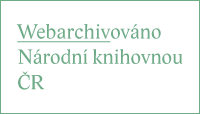Autoři popisují metodu studia hloubkové distribuce bezobratlých v různých půdách pomocí hlubinných pastí, které odchytávají drobné půdní živočichy v hloubkách od 5 do 95 cm, vždy po 10 cm. Rozdíl ve vertikální distribuci je mezi různými taxonomickými skupinami značný.
André, H.M., Ducarme, X., Anderson, J.M., Crossley, D.A.Jr, Koehler, H.H. , Paoletti, M.G., Walter, D.E., Lebrun, P. (2001): Skilled eyes are needed to go on studying the richness of the soil. Nature, 409: 761.
Rusek, J. (2000): Živá půda. Živa, 48: 25-27, 73-76, 121-124, 169-172, 217-221, 267-270.
Růžička, V. (2002): Spatial distribution of spiders (Araneae) on scree slopes in Křivoklátsko and Moravský Kras Protected Landscape Areas. Acta Soc. Zool. Bohem., 66: 321-328.
Růžička, V., Klimeš, L. (2005): Spider (Araneae) communities of scree slopes in the Czech Republic. J. Arachnol., 33: 280-289.
Růžička, V., Boháč, J., Syrovátka, O., Klimeš, L. (1989): Bezobratlí kamenitých sutí v severních Čechách (Araneae, Opiliones, Coleoptera, Diptera). Sborn. Severočes. Muz., Přír. Vědy 17: 25-36.
Schlick-Steiner, B.C., Steiner, F.M. (2000): Eine neue Subterranfalle und Fänge aus Kärntnen. Carinthia II, 190: 475-482.
The authors describe a method for studying invertebrate depth distribution in various soils. Deep subterranean traps collected small soil invertebrates in a depth range from 5 to 95 centimetres, at 10 centimetre intervals throughout. The differences in the vertical distribution found are remarkable among various taxonomic groups.
 Suchozemský stejnonožec Cylisticus convexus obývá suť nad Zbrašovskými aragonitovými jeskyněmi v celé její hloubce a běžně se vyskytuje také přímo v jeskyních. Foto J. Mikula / © J. Mikula
Suchozemský stejnonožec Cylisticus convexus obývá suť nad Zbrašovskými aragonitovými jeskyněmi v celé její hloubce a běžně se vyskytuje také přímo v jeskyních. Foto J. Mikula / © J. Mikula




